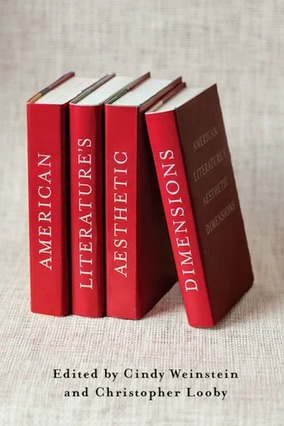Rethinking the category of aesthetics in light of recent developments in literary theory and social criticism, the contributors to this volume showcase the interpretive possibilities available to those who bring politics, culture, ideology, and conceptions of identity into their critiques. Essays combine close readings of individual works and authors with more theoretical discussions of aesthetic theory and its relation to American literature. In their introduction, Weinstein and Looby argue that aesthetics never left American literary critique. Instead, the essay casts the current "return to aesthetics" as the natural consequence of shortcomings in deconstruction and new historicism, which led to a reconfiguration of aesthetics.
Subsequent essays demonstrate the value and versatility of aesthetic considerations in literature, from eighteenth-century poetry to twentieth-century popular music. Organized into four groups—politics, form, gender, and theory—contributors revisit the canonical works of Henry James, Nathaniel Hawthorne, and Stephen Crane, introduce the overlooked texts of Constance Fenimore Woolson and Earl Lind, and unpack the complexities of the music of The Carpenters. Deeply rooted in an American context, these essays explore literature's aesthetic dimensions in connection to American liberty and the formation of political selfhood.
Contributors include Edward Cahill, Ivy G. Wilson, June Ellison, Dorri Beam, Christopher Castiglia, Christopher Looby, Wendy Steiner, Cindy Weinstein, Trish Loughran, Jonathan Freedman, Elisa New, Dorothy Hale, Mary Esteve, Eric Lott, Sianne Ngai
- Contents
- Acknowledgments
- Introduction
- PART 1 Aesthetics and the Politics of Freedom
- 1. Liberty of the Imagination in Revolutionary America
- 2. The Writing on the Wall: Revolutionary Aesthetics and Inner Spaces
- 3. Stephen Crane's Refrain
- 4. Lyric Citizenship in Post 9/11 Performance: Sekou Sundiata's the 51st (dream) state
- PART 2 Aesthetics and the Representation of Sexuality
- 5. Aesthetics Beyond the Actual: The Marble Faun and Romantic Sociality
- 6. Henry James, Constance Fenimore Woolson, and the Figure in the Carpet
- 7. Sexuality's Aesthetic Dimension: Kant and the Autobiography of an Androgyne
- 8. From Hawthorne to Hairspray: American Anxieties About Beauty
- PART 3 Aesthetics and the Reading of Form
- 9. When Is Now? Poe's Aesthetics of Temporality
- 10. Reading in the Present Tense: Benito Cereno and the Time of Reading
- 11. What Maggie Knew: Game Theory, The Golden Bowl, and the Critical Possibilities of Aesthetic Knowledge
- 12. Upon a Peak in Beinecke: The Beauty of the Book in the Poetry of Susan Howe
- PART 4 Aesthetics and the Question of Theory
- 13. Warped Conjunctions: Jacques Ranciere and African American Twoness
- 14. Aesthetics and the New Ethics: Theorizing the Novel in the Twenty-First Century
- 15. Postwar Pastoral: The Art of Happiness in Phillip Roth
- 16. Perfect is Dead: Karen Carpenter, Theodor Adorno, and the Radio; or, If Hooks Could Kill
- 17. Network Aesthetics: Juliana Spahr's the Transformation and Bruno Latour's Reassembling the Social
- AFTERWORD: Are Aesthetic Models the Best Way to Talk About the Artfulness of Literary Texts?
- Contributors
- Index

